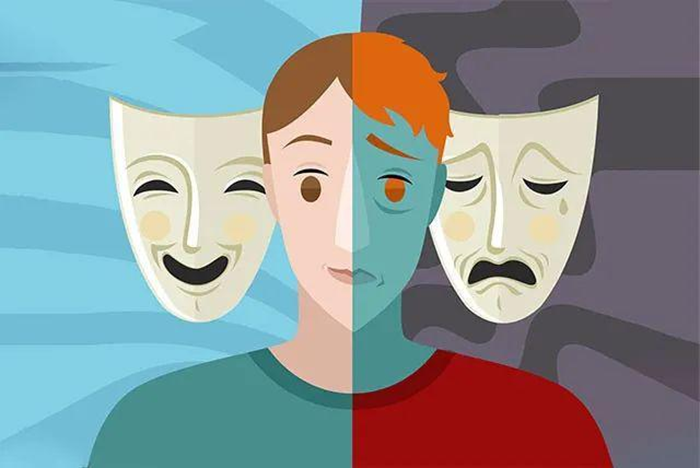Borderline Personality Disorder (BPD) and Bipolar Disorder are two mental health conditions that can share some similarities in symptoms and presentation. However, they are distinct conditions with different diagnostic criteria and treatment approaches. In this article, we will explore the similarities and differences between BPD and Bipolar Disorder.
Similarities between bpd and bipolar disorder
1.Mood Instability
Both BPD and Bipolar Disorder can involve mood instability. People with BPD may experience intense and rapid shifts in mood, from feeling euphoric to feeling depressed or anxious. Similarly, people with Bipolar Disorder may experience episodes of mania or hypomania, which involve elevated or irritable mood, and episodes of depression, which involve low mood, hopelessness, and loss of interest in activities.
2.Impulsivity
Both BPD and Bipolar Disorder can involve impulsive behavior. People with BPD may engage in impulsive behaviors such as substance abuse, binge eating, reckless driving, or risky sexual behavior. Similarly, people with Bipolar Disorder may engage in impulsive behaviors such as excessive spending, gambling, or substance abuse during manic or hypomanic episodes.
3.Self-Harm
Both BPD and Bipolar Disorder can involve self-harm behaviors. People with BPD may engage in self-harm behaviors such as cutting or burning themselves as a way to cope with intense emotions or to feel a sense of control. Similarly, people with Bipolar Disorder may engage in self-harm behaviors during depressive episodes as a way to cope with feelings of hopelessness and despair.
4.Relationship Difficulties
Both BPD and Bipolar Disorder can involve difficulties in maintaining stable and healthy relationships. People with BPD may struggle with fear of abandonment, intense and unstable relationships, and difficulty with trust. Similarly, people with Bipolar Disorder may experience relationship difficulties due to mood swings, impulsivity, and changes in behavior during manic or depressive episodes.
5.Comorbidity
BPD and Bipolar Disorder can also co-occur with other mental health conditions, such as anxiety disorders, substance use disorders, and eating disorders. This can make diagnosis and treatment more complex, as healthcare professionals need to address multiple conditions simultaneously.
The difference between bpd and bipolar disorder
Diagnostic Criteria
BPD is diagnosed based on a pattern of unstable relationships, self-image, and emotions. To be diagnosed with BPD, a person must exhibit at least five of the following symptoms:
- Fear of abandonment
- Unstable relationships
- Unstable self-image
- Impulsive behavior
- Suicidal or self-harming behavior
- Mood swings
- Feelings of emptiness
- Intense and inappropriate anger
- Paranoid thoughts or dissociative symptoms
Bipolar Disorder, on the other hand, is diagnosed based on episodes of mania or hypomania, and depression. To be diagnosed with Bipolar Disorder, a person must have experienced at least one episode of mania or hypomania, and one episode of depression.
Mood Episodes
In Bipolar Disorder, mood episodes are typically longer and more distinct than in BPD. Manic episodes can last for at least a week and involve elevated or irritable mood, increased energy, decreased need for sleep, racing thoughts, and grandiosity. Hypomanic episodes are less severe than manic episodes and may not cause significant impairment in functioning. Depressive episodes can last for at least two weeks and involve low mood, loss of interest in activities, feelings of worthlessness or guilt, and changes in appetite or sleep.
In BPD, mood instability can be more frequent and rapid. People with BPD may experience intense and rapid shifts in mood, from feeling euphoric to feeling depressed or anxious, sometimes within the same day.
Triggers
In BPD, mood instability and impulsive behavior can be triggered by interpersonal stressors, such as conflicts with others, fear of abandonment, or perceived rejection. In Bipolar Disorder, mood episodes can be triggered by life events, medication changes, or sleep disruption.
Treatment
While some treatments may overlap, such as psychotherapy, medication, and lifestyle changes, the specific treatments for BPD and Bipolar Disorder can differ. For BPD, psychotherapy, such as Dialectical Behavior Therapy (DBT), is often the first-line treatment, and medication may be used to manage specific symptoms, such as depression or anxiety. For Bipolar Disorder, medication, such as mood stabilizers or antipsychotics, is often the first-line treatment, and psychotherapy may be used as an adjunctive treatment.
Conclusion
BPD and Bipolar Disorder can share some similarities in symptoms, such as mood instability, impulsivity, self-harm, and relationship difficulties. However, they are distinct conditions with different diagnostic criteria, triggers, and treatment approaches. If you or someone you know is experiencing symptoms of BPD or Bipolar Disorder, it is important to seek help from a healthcare provider or mental health professional.
Related topics
- How Is BPD Different From Bipolar?
- What Jobs Are Suitable For People With High-Functioning BPD?
- The 5 Best Mood Stabilizer For BPD


